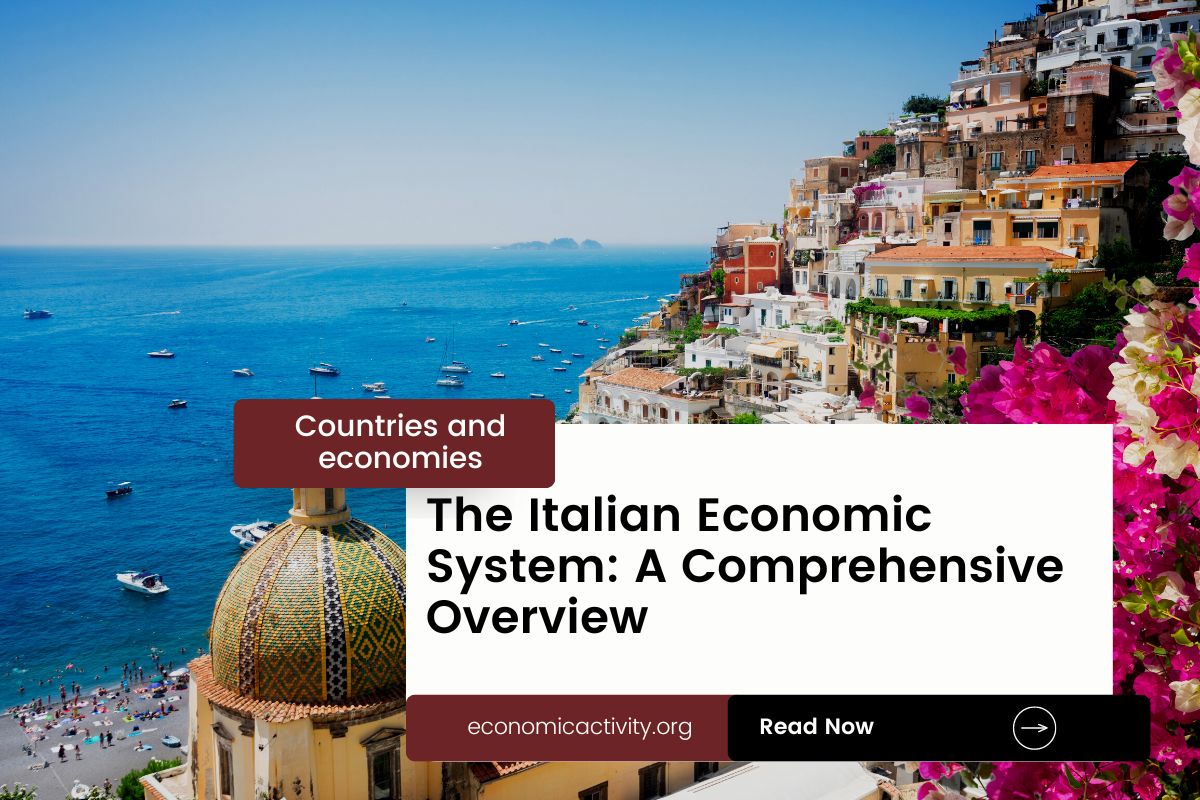What is the economic system of Italy? The economy of Italy is based on a mixed economy. The country’s economic system combines elements of a market economy and a planned economy.
Italy has a diversified economy with a focus on manufacturing, tourism, and agriculture. It is the world’s eighth-largest exporter of goods and services.
In Italy, the economy is composed of a private sector, consisting of individuals and businesses that make autonomous decisions based on self-interest, and a public sector, where the state determines the production and distribution of certain goods and services. No country is purely capitalist or purely communist.
What do the freedom indexes tell about the economic system of Italy?
Now, to determine if a country is mostly a market economy or a planned economy, it is useful to examine some economic indexes. For instance, according to the 2022 Index of Economic Freedom, which measures the ability of every human to control his own labor and property, Italy is ranked 57th globally and 33rd in Europe indicating that the country has a moderately free economy.
In a similar way, the 2022 Freedom House index evaluates the state of political rights and civil liberties globally. Generally, market economies tend to align more with democracy and freedom, while command economies tend to be characterized by greater state control and fewer democratic and civil liberty protections. Italy gets a score of 90/100, which qualifies it as free. Italy is a country where the government does not control what people do for political reasons, and people have the freedom to choose (what, how much, and how to produce, whether to buy or not, selling price, etc.)
The Link Between Public Sector Employment and the Economic System of Italy
An indicator of the extent to which the State is involved in the economy is the number of public sector employees. In Italy, according to ILOSTAT, the number of public sector employees as a percentage of the total workforce is 16.0% (2013). In the country’s mixed economy, the number of public sector employees as a percentage of the total workforce varies based on the specific policies and practices adopted by the State.
Some economic activities are left to the private sector while others are under government control. The bigger the public sector the closer is the economy to being a command economy.
What do the biggest companies in Italy say about the country’s economic system?
The biggest company in Italy should also be looked at, as well as whether it is a state-owned or private company. In this case, Enel is a multinational energy company providing electricity and gas to over 60 million customers in 16 countries. Enel’s main shareholder is the Ministry of Economy and Finance of Italy, which owns a 23.6% shareholding interest in the company. In addition to Enel, another thirteen Group companies are listed on the stock exchanges of Italy, Spain, Russia, Argentina, Brazil, Chile, and Peru. source
Additionally, Italy’s private sector industries include fashion, automotive, and tourism. While public industries include healthcare, education, and transportation.
More: Top 10 Biggest companies by revenue in Italy
The historical factors that have influenced the economic system of Italy
The mixed economy system of Italy in the last century was caused by a combination of factors, including the post-WWII economic boom, the introduction of the euro, and the liberalization of the Italian economy.
These factors allowed for increased foreign investment, increased competition, and the development of a more open and competitive market. This has resulted in a more balanced economy, with both public and private sectors playing an important role.





Leave a Reply